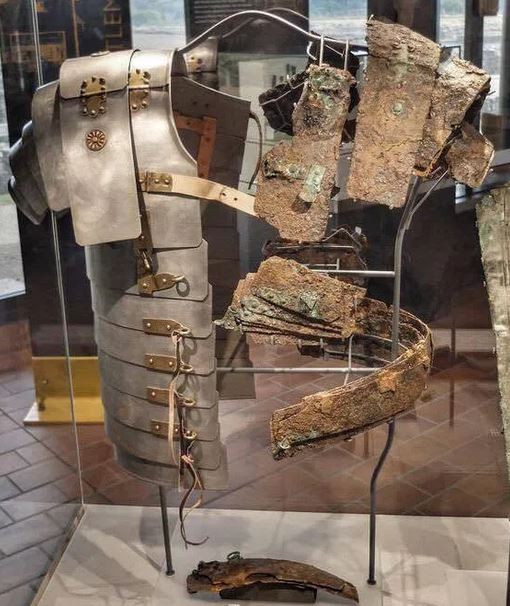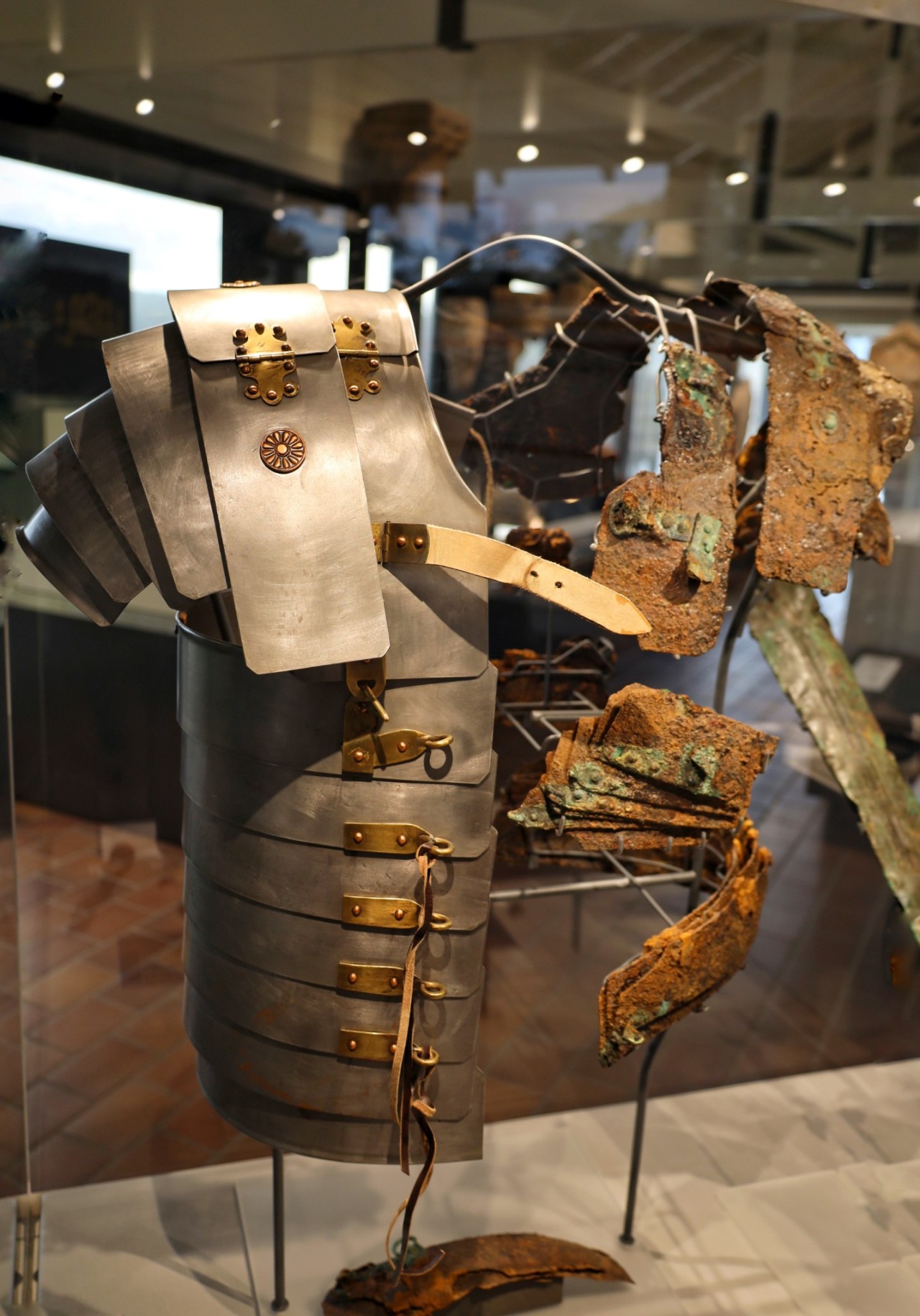The Lorica Segmentata unearthed at Corbridge Roman Town, near Hadrian’s Wall, stands as the most well-preserved and intact example of this iconic Roman armor, with its discovery holding immense international significance. Dating back to the 1st century AD, this remarkable find not only sheds light on Roman military technology but also offers a glimpse into the daily life of Roman soldiers stationed along the empire’s northern frontier.
Design and Functionality
The Lorica Segmentata is constructed from overlapping metal strips, intricately fashioned into bands that were attached to internal leather straps and secured with external buckles. This innovative design provided soldiers with an exceptional balance of protection and mobility. The segmented structure allowed the armor to move fluidly with the soldier’s body, ensuring that they could engage in combat effectively without sacrificing flexibility.

Advanced Protective Features
The armor’s ability to absorb and deflect blows made it a significant advancement over earlier armor types, such as the Lorica Hamata (chainmail). While chainmail was widely used throughout the empire, it did not offer the same level of rigidity and protection in vulnerable areas. The segmentata’s design was particularly suited for the disciplined formations of Roman infantry, allowing for effective combat strategies.
Historical Context
The Lorica Segmentata was utilized from around 14 BC until the late 3rd century AD, making it a symbol of Roman military prowess during a time when the empire was at its zenith. Its use coincided with various military campaigns, including the conquest of Britain and the defense against Germanic tribes. As a prominent part of the Roman soldier’s kit, it played a crucial role in establishing the identity and effectiveness of Roman legions, demonstrating the empire’s sophisticated military organization.

Role in Military Campaigns
During its period of use, the Lorica Segmentata served as a vital component in the Roman military’s arsenal, supporting various strategies employed during significant battles. Its functionality allowed soldiers to maintain their agility while ensuring protection, which was essential for the success of Roman legions in hostile territories.
Legacy and Importance
While the Lorica Segmentata was widely used across the Roman Empire, its counterpart, the Lorica Hamata, may have been more commonly worn by soldiers in different regions, particularly in the earlier centuries of the empire. Nevertheless, the segmentata remains one of the most distinctive and advanced forms of armor in ancient history, symbolizing not only military innovation but also the complex logistics and craftsmanship that supported the Roman military machine.
Conclusion
As scholars continue to study the Lorica Segmentata, it will undoubtedly deepen our understanding of the Roman military’s role in shaping the ancient world. This remarkable piece of armor not only represents the technological advancements of its time but also reflects the cultural and historical significance of the Roman Empire’s military endeavors.

